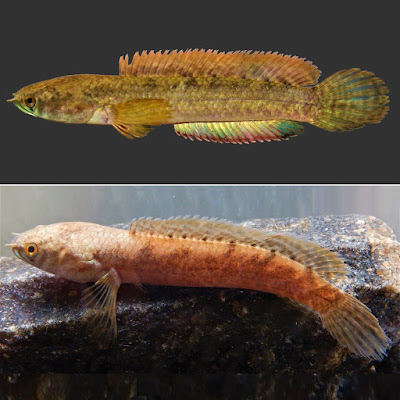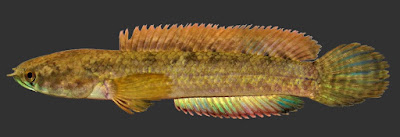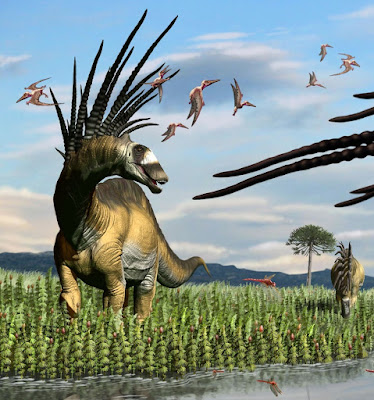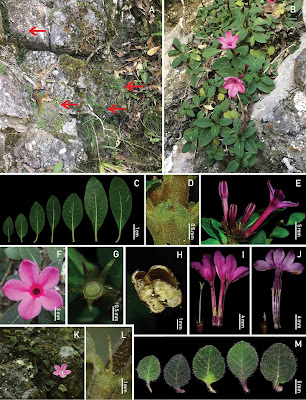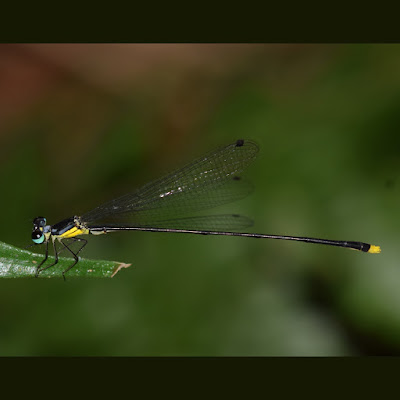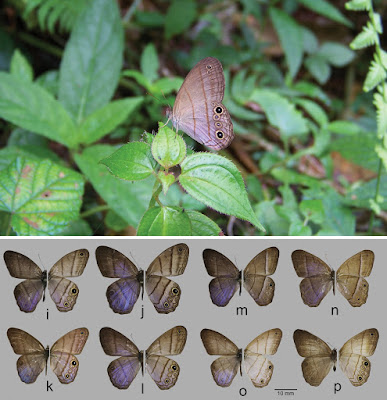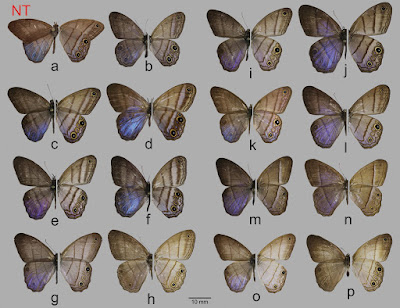[Most Recent Entries] [Calendar View]
Tuesday, February 5th, 2019
| Time | Event | ||||||
| 3:52a | [Ichthyology • 2019] Channa lipor • A New Species of Dwarf Channa (Teleostei: Channidae) from Meghalaya, Northeast India
Abstract Channa lipor, a new species of snakehead of the C. gachua species-group, is described based on 11 specimens from Meghalaya, Northeast India. It is distinguished from its congeners by possessing an orange, bronze-brown dorsum and fins, 9–12 black spots or blotches on the dorsal-fin sub-margin appearing parallel along the length of the dorsal-fin base, six oblique brown bars on the upper half on the flank, presence of seven gray to brown zigzag bands on the caudal fin, and fewer anal-fin rays. Channa lipor, new species, morphologically resembles C. aurantipectoralis, but the partial cox1 gene sequences reveal a genetic distance of 12.6–13.1% between them, and Channa lipor, new species, also possesses deep sequence divergence from any known populations of C. gachua. It differs from the topotypic C. gachua by having fewer anal-fin rays (20 vs. 22–24), fewer dorsal-fin rays (29–32 vs. 34–36), and fewer pectoral-fin rays (12–14 vs. 15–17), and in tooth pattern, by having the fifth ceratobranchial curved with four rows of teeth, outer row with 11 thick teeth; palatine with three rows of curved teeth, inner row with 14 large inwardly curved teeth; and dentary with long canine-like teeth in the posterior end.
Channa lipor, new species Etymology.—The specific epithet lipor indicates the local vernacular name for the species in Khasi language, a dialect spoken by the Khasi tribes of Meghalaya. It is used as a noun in apposition. Remarks.— Channa lipor is well known in the aquarium trade as ‘‘Channa sp. lipor’’. Jayasimhan Praveenraj, Arumugam Uma, Nallathambi Moulitharan, and Sadokpam Gojendro Singh. 2019. A New Species of Dwarf Channa (Teleostei: Channidae) from Meghalaya, Northeast India. Copeia. 107(1); 61–70. DOI: 10.1643/CI-18-079 | ||||||
| 6:50a | [Paleontology • 2019] Bajadasaurus pronuspinax • A New Long-spined Dinosaur from Patagonia sheds light on Sauropod Defense System
Abstract Dicraeosaurids are a group of sauropod dinosaurs characterized by a distinctive vertebral column with paired, long, neural spines, present in an extreme fashion in the South American form Amargasaurus cazaui. This distinctive morphology has been interpreted as a support structure for a thermoregulatory sail, a padded crest for display, a dorsal hump acting as fat reservoir, and even as inner cores for dorsal horns. Other inferred functions (if any) of this structure were related to sexual display and/or defense strategies. Here we describe a new dicraeosaurid sauropod, Bajadasaurus pronuspinax gen. et sp. nov., from Patagonia which preserves the most complete skull of the group and has extremely elongate bifid cervical neural spines that point permanently forward, irrespective of the neck position. Although much shorter versions of this neural spine configuration were already recorded for other dicraeosaurid taxa, the long, anteriorly bent spines of this new dinosaur support the hypothesis that these elongate spines of dicraeosaurid sauropods served as passive defense structures.
Systematic palaeontology SAUROPODA Marsh 1878 DIPLODOCOIDEA Marsh 1884 FLAGELLICAUDATA Harris & Dodson 2004 DICRAEOSAURIDAE Huene 1927 Bajadasaurus pronuspinax gen. et sp. nov. Etymology: Generic name from Bajada (Spanish for downhill, in reference to the locality Bajada Colorada) and saurus (Greek, lizard). Specific epithet from pronus (Latin, bent over forward) and spinax (Greek, spine), referring to the anteriorly pointed, curved, neural spines of the cervical vertebrae. Pablo A. Gallina, Sebastián Apesteguía, Juan I. Canale and Alejandro Haluza. 2019. A New Long-spined Dinosaur from Patagonia sheds light on Sauropod Defense System. Scientific Reports. 9: 1392. DOI: 10.1038/s41598-018-37943-3 | ||||||
| 7:29a | [Botany • 2019] Spiradiclis karstana (Rubiaceae) • A New Species from Yunnan, China
Abstract Spiradiclis karstana, a new species of Spiradiclis (Rubiaceae) collected from Yunnan, China, is described for the first time. It is morphologically close to S. jingxiensis, but differs from the latter mainly by its inflorescences with 5–9 flowers, its 1.5–2.4 mm long peduncles, its stipules shorter than 1 mm and the 5–12 pairs of secondary veins. The conservation status is assessed as “Vulnerable” (VU) according to the IUCN Red List Categories and Criteria. Keywords: Spiradiclis, Rubiaceae, taxonomy, karst, China Spiradiclis karstana L.Wu, X.Li & Q.R.Liu, sp. nov. Diagnosis: Similar to S. jingxiensis, but differing from this species by the ovate-triangular stipules less than 1 mm long (vs. stipules linear, 1.5–3.0 mm long), the elliptic to oblong leaf blades (vs. ovate to broadly ovate), the 5–12 pairs of secondary veins (vs. 4–5 pairs) and the inflorescences with 5–9 flowers (vs. inflorescences with 1–2 flowers). .... Distribution and habitat: Spiradiclis karstana is known only from the crevices of forested cliffs at altitudes ranging from 800 to 1600 m in the karst area of SE Yunnan. This part of Yunnan is covered by evergreen rain forests that are highly similar to those in Indo-Malaysia (Zhu 2013) and are dominated by species from Magnoliaceae, Lauraceae, Dipterocarpaceae and Annonaceae. Etymology: The specific epithet refers to the habitat of the new species. Lei Wu, Xiong Li, Wen-Jian Liu and Quan-Ru Liu. 2019. Spiradiclis karstana (Rubiaceae), A New Species from Yunnan, China. PhytoKeys. 117: 1-8. DOI: 10.3897/phytokeys.117.28281 | ||||||
| 10:46a | [Entomology • 2019] Coeliccia lecongcoi • A New Damselfly (Odonata: Zygoptera: Platycnemididae) from the Central Highlands of Vietnam
Abstract Coeliccia lecongcoi sp. nov. (holotype ♂, .., Ngoc Linh Nature Reserve, Kon Tum Province, the Vietnamese Central Highlands) is described and illustrated from both sexes. The new species is allied to Coeliccia duytan Phan, 2017 and Coeliccia hayashii Phan & Kompier, 2016 but differs by the synthoracic pattern and structure of the appendages and genital ligula of the male and the posterior pronotal lobe of the prothorax of the female. Keywords: Odonata, Platycnemididae, Coeliccia lecongcoi sp. nov., Vietnam, new species Quoc Toan Phan. 2019. Coeliccia lecongcoi sp. nov., A New Damselfly from the Central Highlands of Vietnam (Odonata: Zygoptera: Platycnemididae). Zootaxa. 4551(4); 471–478. DOI: 10.11646/zootaxa.4551.4.7 | ||||||
| 11:01a | [Entomology • 2019] Amiga gen. n. • A Revision of the New Genus Amiga, described for Papilio arnaca Fabricius, 1776 (Lepidoptera, Nymphalidae, Satyrinae) Abstract We here propose a new, monotypic genus, Amiga Nakahara, Willmott & Espeland, gen. n., to harbor a common Neotropical butterfly, described as Papilio arnaca Fabricius, 1776, and hitherto placed in the genus Chloreuptychia Forster, 1964. Recent and ongoing molecular phylogenetic research has shown Chloreuptychia to be polyphyletic, with C. arnaca proving to be unrelated to remaining species and not readily placed in any other described genus. Amiga arnaca gen. n. et comb. n. as treated here is a widely distributed and very common species ranging from southern Mexico to southern Brazil. A neotype is designated for the names Papilio arnaca and its junior synonym, Papilio ebusa Cramer, 1780, resulting in the treatment of the latter name as a junior objective synonym of the former. A lectotype is designated for Euptychia sericeella Bates, 1865, which is treated as a subspecies, Amiga arnaca sericeella (Bates, 1865), comb. n. et stat. n., based on molecular and morphological evidence. We also describe two new taxa, Amiga arnaca adela Nakahara & Espeland, ssp. n. and Amiga arnaca indianacristoi Nakahara & Marín, ssp. n., new subspecies from the western Andes and eastern Central America, and northern Venezuela, respectively. Keywords: DNA barcodes, Euptychiina, species delimitation, subspecies, systematics, taxonomy Amiga Nakahara, Willmott & Espeland, gen. n. Papilio arnaca Fabricius, 1776, by present designation Systematic placement and diagnosis: Espeland et al. (2019) recovered Amiga arnaca comb. n. as sister to the “Pareuptychia clade”, whose composition partially corresponded to that found in Peña et al. (2010), with a high support (BS and PP > 0.95). The “Pareuptychia clade” itself was also well supported (BS and PP > 0.95), including Satyrotaygetis satyrina (Bates, 1865), Magneuptychia inani (Staudinger, [1886]), Euptychoides albofasciata (Hewitson, 1869), Neonympha areolatus (Smith, 1797), Erichthodes antonina (C. Felder & R. Felder, 1867), Pareuptychia ocirrhoe (Fabricius, 1776), Megeuptychia antonoe (Cramer, 1775), Splendeuptychia doxes (Godart, [1824]), Nhambikuara mima (Butler, 1867), and Euptychoides eugenia (C. Felder & R. Felder, 1867). Amiga gen. n. is distinguished from all members of the “Pareuptychia clade” by the presence of bluish-lilac coloration on the dorsal hindwing and by the purplish sheen in the tornal half of the VHW. Furthermore, the absence of cornuti and membranous lamella antevaginalis of Amiga gen. n. appear to be unusual character states among the clade. The type species of Chloreuptychia, Papilio chloris Cramer, 1780 (= Chloreuptychia chlorimene) was recovered as sister to a moderately supported (BS and PP > 0. 75 < 0. 95), clade including the “Pareuptychia clade”, “Taygetis clade”, “Splendeuptychia clade” and “Archeuptychia clade”. Etymology: The new generic name is derived from the feminine Spanish noun “amiga”, meaning “a (female) friend”, alluding to the fact that this is a common, familiar butterfly. The generic name is regarded as feminine. Distribution: This genus ranges from southern Mexico throughout virtually all of tropical Central and South America, where its southernmost distribution appears to be southern Brazil. Taxonomy: Amiga gen. n. is regarded as monotypic, with total of four subspecies recognized, of which two are named and described herein. Amiga Nakahara, Willmott & Espeland, gen. n. (– denotes a subspecies, – – denotes a synonym) Amiga arnaca (Fabricius, 1776) comb. n. – –ebusa (Cramer, 1780) – –priamis (D’Almeida, 1922) Amiga arnaca adela Nakahara & Espeland, ssp. n. Amiga arnaca sericeella (Bates, 1865) comb. n. et stat. n. Amiga arnaca indianacristoi Nakahara & Marín, ssp. n.
Amiga arnaca indianacristoi Nakahara & Marín, subsp. n. Etymology: This new species-group name is proposed in recognition of our friend and colleague, Indiana Cristóbal Ríos-Málaver, known as “Indiana Cristo”, who studied the butterflies of the area where this taxon occurs. Indiana Cristo has contributed to Neotropical lepidopterology in various ways, especially through social media, where he is bringing lepidopterology to the public. This species-group name is treated as a latinized masculine noun in the genitive case. Distribution: This taxon occurs in the Venezuelan Cordillera de la Costa and northwestern Cordillera de Mérida, and possibly also into the Serranía de Perijá. Shinichi Nakahara, Gerardo Lamas, Stephanie Tyler, Mario Alejandro Marín, Blanca Huertas, Keith R. Willmott, Olaf H. H. Mielke and Marianne Espeland. 2019. A Revision of the New Genus Amiga Nakahara, Willmott & Espeland, gen. n., described for Papilio arnaca Fabricius, 1776 (Lepidoptera, Nymphalidae, Satyrinae). ZooKeys. 821: 85-152. DOI: 10.3897/zookeys.821.31782 |
| << Previous Day |
2019/02/05 [Calendar] |
Next Day >> |
